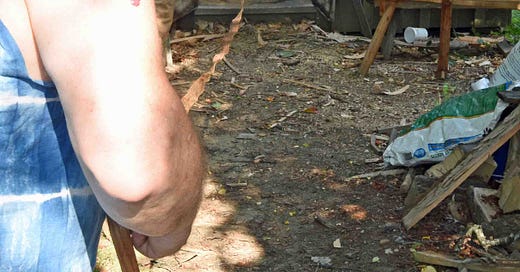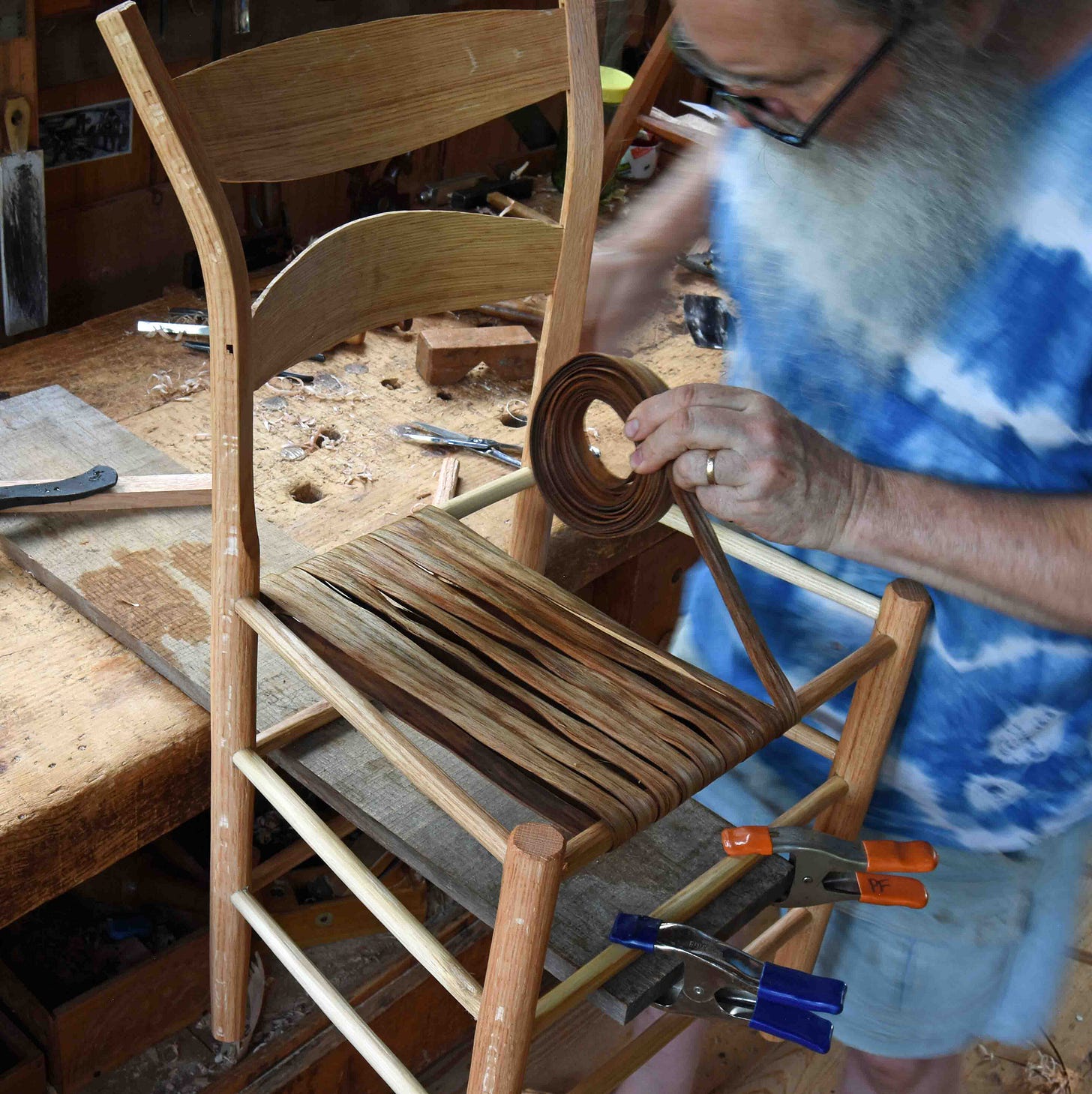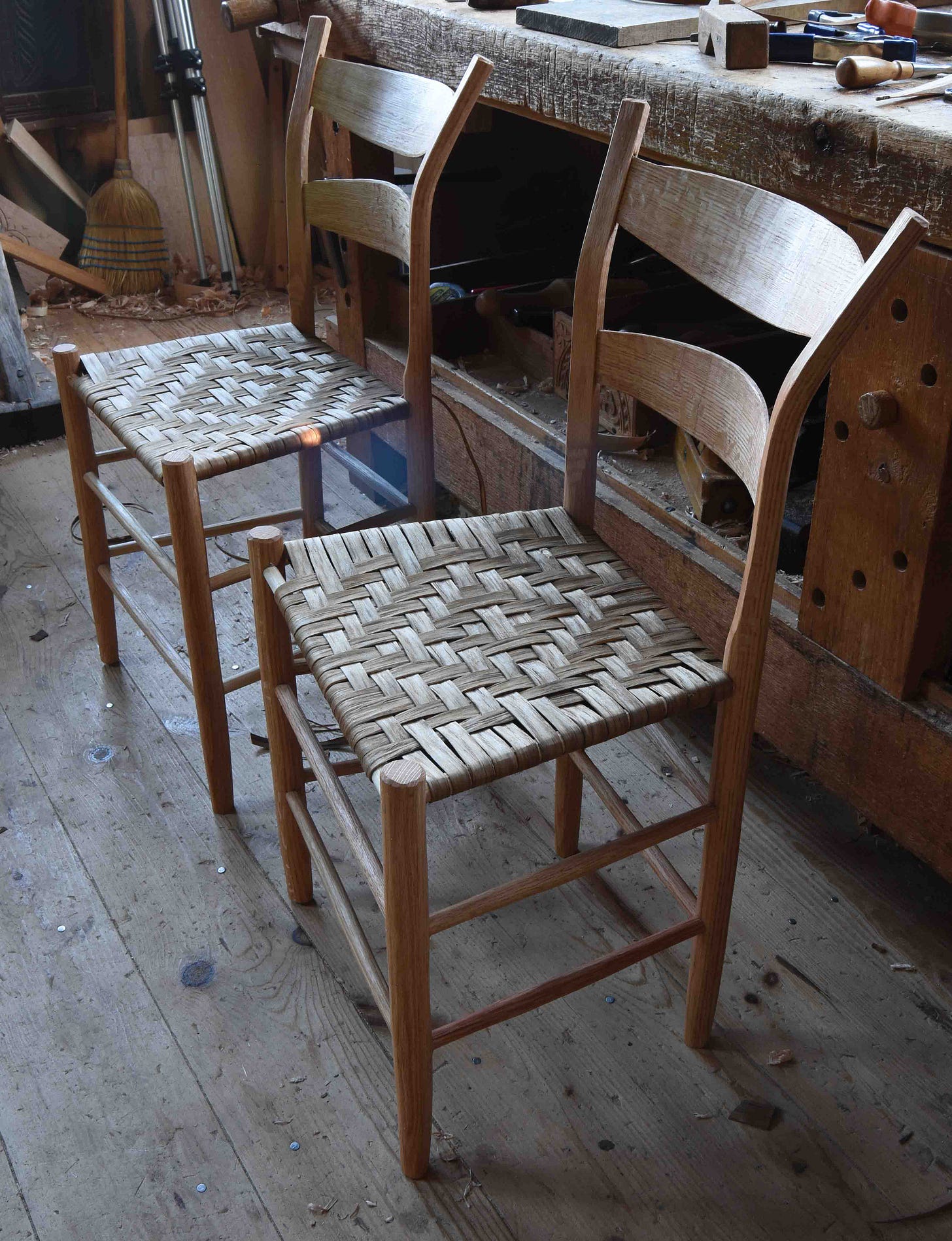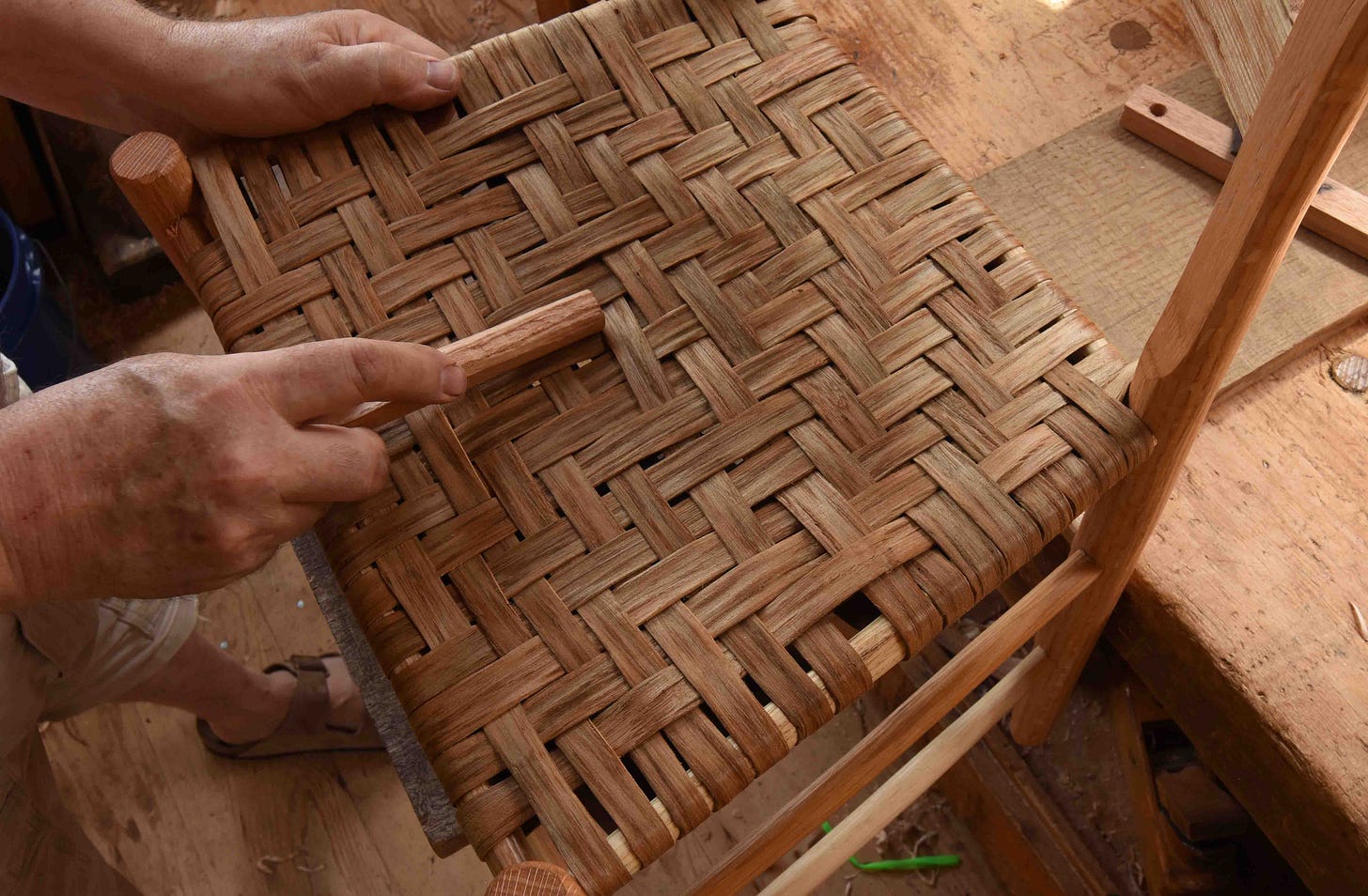[a free-to-all post, a re-hash of some seat weaving snippets and literary references from one of my all-time favorite authors.]
I got the two chairs I’m working on cleaned up & wove seats on them yesterday and today. I started by soaking some of my hickory bark strips and trimming them to an even width. When I cut them from the tree, I made them a bit wider than I want on the chair. Here, I used the shop- building as a thing to clamp a strip to while I walked along its length, trimming it with scissors. Hard to see in this photo, but the end of the strip is clamped to the window sill at the far end of the shop.
When you are lucky enough to make the bark yourself (vs. buying it from another) you can dictate its thickness. I prefer very thin bark, it weaves up beautifully. When wrapping the first section- the warp - around the front and rear rungs, it’s easiest if you keep it wound up in a coil and pass that to & fro.
I pull it taut, but don’t wrench it as tight as I can make it. I don’t want any slop in it and it will tighten up when I weave the other direction. Yesterday afternoon I wove these two to this point -
After those seats dried overnight, I “packed” the weave by pushing the weft strips (those across the seat) toward the back of the chair. The strips shrink in width as they dry, leaving gaps between the rows. You can shove them back to reduce those gaps and make enough room to weave in some filler strips across the front. I do the same to the warp strips too. Depending on the pattern, I shove these either toward the middle for this diamond pattern or toward one side when using a herringbone pattern. Then add filler strips either right & left (diamond) or all to one side (herringbone.)
The photo below shows you how much space you create.
Weaving hickory bark often reminds me of references to it in Mark Twain’s work. The first one I remembered is from the Autobiography of Mark Twain. When describing his uncle’s farm in Missouri, he mentioned:
“Down the forest slopes to the left were the swings. They were made of bark stripped from hickory saplings. When they became dry they were dangerous. They usually broke when a child was forty feet in the air, and this was why so many bones had to be mended every year.” [this is from 2010 edition edited by Harriet Elinor Smith, vol. 1, pp. 214-215]
He was born in 1835 so I imagine this memory is from the mid-1840s. (I looked it up, he was apprenticed in 1848 - so mid-1840s sounds right. ) In the Adventures of Huckleberry Finn, Tom Sawyer is advising Huck Finn to get a sheet with which Jim will make a rope ladder in planning his escape. Huck has other ideas:
"Why, Tom Sawyer, how you talk," I says; "Jim ain't got no use for a rope ladder."
"He has got use for it. How you talk, you better say; you don't know nothing about it. He's got to have a rope ladder; they all do."
"What in the nation can he do with it?"
"Do with it? He can hide it in his bed, can't he?" That's what they all do; and he's got to, too. Huck, you don't ever seem to want to do anything that's regular; you want to be starting something fresh all the time. S'pose he don't do nothing with it? ain't it there in his bed, for a clew, after he's gone? and don't you reckon they'll want clews? Of course they will. And you wouldn't leave them any? That would be a pretty howdy-do, wouldn't it! I never heard of such a thing."
"Well," I says, "if it's in the regulations, and he's got to have it, all right, let him have it; because I don't wish to go back on no regulations; but there's one thing, Tom Sawyer—if we go to tearing up our sheets to make Jim a rope ladder, we're going to get into trouble with Aunt Sally, just as sure as you're born. Now, the way I look at it, a hickry-bark ladder don't cost nothing, and don't waste nothing, and is just as good to load up a pie with, and hide in a straw tick, as any rag ladder you can start; and as for Jim, he ain't had no experience, and so he don't care what kind of a—"
"Oh, shucks, Huck Finn, if I was as ignorant as you I'd keep still—that's what I'D do. Who ever heard of a state prisoner escaping by a hickry-bark ladder? Why, it's perfectly ridiculous." [pp. 343-344 in the University of California Press edition, 1985]
While I’m on the subject of Twain and making chairs, there’s this note that I saw in Alexander’s notebooks, also from Adventures of Huckleberry Finn:
“And there was nice split-bottom chairs, and perfectly sound, too - not bagged down in the middle and busted, like an old basket.” [p. 156]
Those would be oak splits - I made a few white oak baskets over the years, but being from New England the material most available for that work here is ash. And these are the wood, not the bark. So for another day…
[I’ve gone over seat weaving with bark (you can use tulip poplar bark the same way) several times. There’s youtube videos of varying quality that I’ve done - https://www.youtube.com/@MrFollansbee/search?query=hickory
And it’s also as a segment in the video I made about building the JA chair - https://vimeo.com/ondemand/jachairpf ]








Since Schwarz is starting an apparel line, you should supply him with tie-die shirts.
How far do you have to look before you find a Hickory tree that will give up 40' strips of bark? I've been happy to get 14'! Unfortunately, the neighbor who wanted to shell the "Hicker nuts" has passed on.